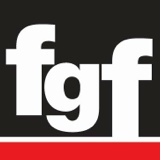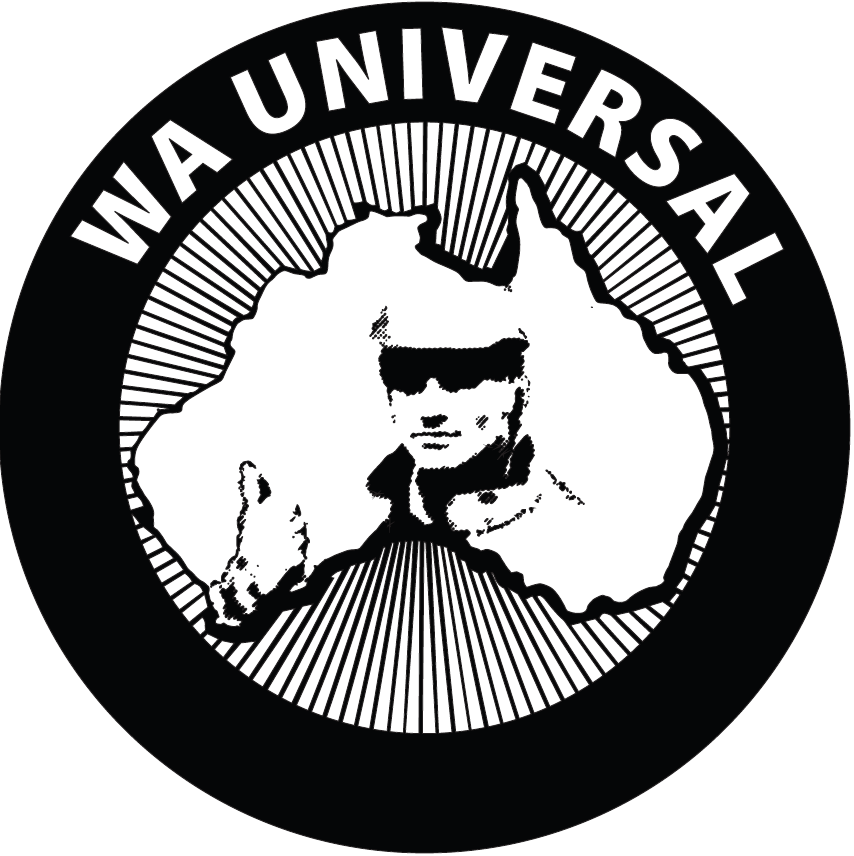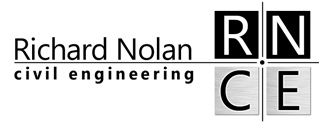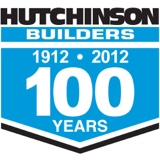Information
-
Job No.
-
Project Name
-
Document No.
-
Conducted on
-
Prepared by
-
Location
1.0 FOLLOW UP ON PREVIOUS AUDIT
-
1.1 Have all action items from the previous inspection been closed out and/or signed off on the checklist (obtain copy of previous weekly site inspection checklist).
-
1.2 Have all plant servicing and maintenance actions from the Plant and Equipment Register been undertaken as specified / per servicing frequency.
2.0 PERMITS TO WORK
-
2.1 Permits have been obtained & authorised for the following work:<br>• Hot work;<br>• Excavation / trenching;<br>• Concrete pouring (formwork);<br>• Isolation of services;<br>• Accessing roofs;<br>• Confined space entry.<br>
-
2.2 Permits are readily available in the vicinity of the task location and all relevant required permit information has been filled out.
3.0 PLANT AND EQUIPMENT
-
3.1 Physical (solid barrier) separation from mobile plant operations established to protect workers / members of the public. Where not practicable, an alternative option has been implemented:<br>• engineering detection systems;<br>• delineation and exclusion zones;<br>• use of signage and spotters. <br>
-
3.2 Light and heavy vehicles separated (where practicable).
-
3.3 Mobile plant operators are licenced, competent and can produce evidence.
-
3.4 Daily operator prestart inspections (specific to the plant item) are being completed.
-
3.5 Logbooks are being maintained for mobile plant.
-
3.6 Damage or faults identified by operators are recorded on prestart inspections and actioned.
-
3.7 Rotating amber beacons are fitted on all mobile plant and operational.
-
3.8 Reversing alarms are fitted on all mobile plant and operational.
-
3.9 All earthmoving equipment fitted with ROPS / FOPS.
-
3.10 All mobile plant fitted with seat belts and worn by operators.
-
3.11 Spotters / safety observers (controlling traffic movement on site) are wearing high visibility clothing.
-
3.12 Guarding and emergency stop devices fitted.
-
3.13 Safe use of hand tools, portable power tools, air tools or other equipment items, (i.e. no reckless or obvious unsafe usage or use without standard items of PPE).
-
3.14 Tag-out system used when plant or equipment item deemed unsafe for use.
4.0 WORKING AT HEIGHTS
-
4.1 Workers undertaking work at heights > 2 metres are undertaking work on level surfaces with secure, compliant and fixed edge protection.
-
4.2 EWP prestarts undertaken and logbooks up to date.
-
4.3 EWP’s not overloaded or used in unsafe areas (i.e. adjacent to drop offs or on slopes).
-
4.4 Personal fall protection equipment correctly labelled, tagged as fit for use and is being used as intended / prescribed by SWMS.
-
4.5 Required fall retrieval / rescue provisions are readily available and/or set up ready for use.
-
4.6 Fall protection anchor points:<br>• clearly identified;<br>• approved for use by a competent person;<br>• have SWL clearly marked.<br>
-
4.7 Workers are not working from ladders (with the exception of designated platform ladders).
-
4.8 Non-platform ladders (industrial rated only) are secured and only used for access purposes.
-
4.9 Workers undertaking working at height activities have the relevant competency training and can produce evidence.
-
4.10 Safe access provided to elevated locations on site (i.e. temporary ramps, stairs, walkways, temporary tied ladders, roof access, work platform / scaffold access).
-
4.11 Access ladders to elevated locations extend 1 metre past the work platform and are firmly secured / footed.
5.0 SCAFFOLDING
-
5.1 Scafftags / similar identifiers are in place to indicate fit for use scaffolds.
-
5.2 Scafftag removal, signage and/or barrier mesh used to clearly show incomplete scaffolds / sections of scaffold.
-
5.3 Safe scaffold erection / dismantling protocols used to prevent potential falls > 2 metres.
-
5.4 Access ladder, stairs and working areas free of debris, dirt, unnecessary equipment or similar.
-
5.5 Decks fully planked and secured.
-
5.6 Sole plates founded on sound base.
-
5.7 Adequately tied off / maintained.
-
5.8 Handover certificates received for newly erected / modified scaffolds.
6.0 FALLING OBJECTS / PUBLIC PROTECTION
-
6.1 Adequate general falling object / public protection controls in place, (i.e. gantries, hoarding, site fence, catch platforms, containment screening, warning / directional signage, exclusion zones, use of tool lanyards or similar).
-
6.2 Penetrations securely covered, trafficable and marked.
7.0 TRENCHING AND EXCAVATION
-
7.1 Trenches / excavations have a safe means of access / egress, (i.e. ladders every 9 metres firmly fixed at top / access ramps / provisions every 9 metres).
-
7.2 Trenches / excavations have been benched / battered / shored, or approved for safe access via a specific geotechnical engineer sign-off.
-
7.3 Adequate barriers, signage and fencing established around trench / excavation to prevent falls / unauthorised entry.
-
7.4 Soil kept a minimum of 600mm away from the edge of trench / excavation.
-
7.5 Benching not greater than 1.5 metres in height (unless certified by engineer).
-
7.6 Pier holes adequately protected or barricaded.
-
7.7 Mobile plant and vehicles operating minimum 600mm away from edge of trench / excavation.
-
7.8 No person is working in a trench / excavation alone.
8.0 CONFINED SPACES
-
8.1 Atmosphere is continually monitored for changes in atmospheric contamination.
-
8.2 Contaminant exposure levels have been identified (and recorded) and are within acceptable limits.
-
8.3 Workers involved in confined space tasks are wearing specific PPE as stipulated by confined space entry permit.
-
8.4 Workers undertaking confined space works have the relevant competency training and can produce evidence.
-
8.5 Appropriate signage and barriers erected to notify other site personnel of confined space work in progress.
-
8.6 A standby person is on standby for the duration of the confined space works.
-
8.7 Required confined space retrieval / rescue provisions are readily available and/or set-up ready for use.
-
8.8 All persons undertaking confined space works record their entry and exit on a log / permit.
9.0 HOT WORK
-
9.1 Hoses, gauges and hand pieces in good condition.
-
9.2 Flash back arrestors fitted into both oxygen and fuel gas lines.
-
9.3 Portable gas bottles restrained and secured against movement at all times during use (i.e. mounted on trolley).
-
9.4 Gas cylinders in good condition, (i.e. not dented or similar).
-
9.5 Exclusion zones of approximately 15 metres in place or protective screen used.
-
9.6 Fire extinguishers available within 10 metres of personnel undertaking hot work.
-
9.7 Suitable ventilation provided.
10.0 ELECTRICAL
-
10.1 No ‘live work’ is undertaken.
-
10.2 Isolation tags and locks provided and used for electrical isolations as intended.
-
10.3 All isolation points clearly identified.
-
10.4 Approved earth leakage protection provided for all circuits.
-
10.5 Generators fitted with a permanently installed earth leakage device.
-
10.6 All temporary distribution boards have:<br>• appropriate signage;<br>• system circuit map / identification description.<br>Are:<br>• fixed to ground;<br>• lockable;<br>• weatherproof.<br>
-
10.7 Electrical leads enter and exit temporary distribution boards through the opening provided at the base of the boards.
-
10.8 Construction wiring not tied, bundled or grouped with permanent wiring, and is clearly distinguishable (i.e. via marking / tape).
-
10.9 All electrical equipment, including RCD’s ‘fit for use’ and have current test tags attached.
-
10.10 All temporary electrical leads secured off ground / positioned to prevent damage and no longer than 30 metres in length.
-
10.11 Double adaptors, piggyback units and domestic type multi-outlet devices are not used.
-
10.12 Equipment or materials not stacked or placed over electrical leads.
-
10.13 Portable lights protected against mechanical damage with mechanical guard for lamps and adequate stability.
-
10.14 Handover certificates received for newly installed temporary installations.
11.0 LIFTING / CRANES
-
11.1 Lifting / rigging equipment marked with SWL, inspected, tagged and certified for use and is being used as intended / prescribed.
-
11.2 Crane weight load indicators tested with a calibrated test weight prior to any heavy / complex lift.
-
11.3 SWL specifications clearly marked on crane and load chart safety decals clearly displayed.
-
11.4 Workers undertaking lifting tasks (crane operator, dogger, rigger) have the relevant training / licences and can produce evidence.
12.0 TEMPORARY WORKS
-
12.1 Safe access to formwork deck provided.
-
12.2 Formwork erection / dismantling areas excluded to non-essential personnel to minimise fall / falling object risks.
-
12.3 Pre-pour inspection is certified by a qualified structural engineer prior to loading.
-
12.4 Fall protection controls in place during formwork tasks (i.e. fall arresting platform, personal fall protection systems and single leading edge with adequate bearer positioning).
13.0 LIVE SERVICES
-
13.1 Services which could be impacted by construction activities have been protected / isolated.
-
13.2 All services have clearly visible identification signage.
-
13.3 Overhead powerlines which may be contacted by plant / vehicles have high visibility warning signage and height barriers where practicable.
14.0 LIVE VEHICULAR TRAFFIC
-
14.1 Physical barriers are installed in accordance with manufacturers’ recommendations, and comply with / are inscribed with AS 3845.
-
14.2 Temporary road works signage includes an afterhours emergency number.
-
14.3 Project compound work area access and egress identified with clear signposting, traffic management and demarcated as required.
15.0 HAZARDOUS CHEMICALS & DANGEROUS GOODS (HCDG)
-
15.1 HCDG Register readily available on site.
-
15.2 Current SDS readily available for all HCDG’s used on site (dated within last 5 years).
-
15.3 Risk assessments undertaken for all HCDG on site and filed with each chemical SDS.
-
15.4 HCDG appropriately labelled, (i.e. in english, product name, and risk and safety phrases).
-
15.5 Where HCDG’s have been decanted, the container is clearly labelled with the product name of the chemical and the chemical’s risk and safety phrases.
-
15.6 HCDG’s, including gas bottles, stored safely (with regards to their security, type of container, compatibility or similar).
-
15.7 Appropriate hazardous and dangerous goods signage displayed.
-
15.8 Workers using HCDG’s are wearing the appropriate PPE (as stipulated by the SDS).
-
15.9 Spill response equipment readily available.
16.0 ASBESTOS
-
16.1 Building structure and materials have been identified and appropriate warning and exclusion signage in place, prior to demolition / construction activities.
-
16.2 Workers undertaking asbestos activities have the relevant training / licences and can produce evidence.
-
16.3 Controls in place to prevent inadvertent asbestos contact with members of the public.
-
16.4 A system of air filtering / monitoring in place, and a personnel decontamination area setup.
-
16.5 Safe handling and removal techniques do not involve breakage or dust creation.
-
16.6 Appropriate waste handling / disposal, (i.e. lined bins or similar).
17.0 PERSONAL PROTECTIVE EQUIPMENT (PPE)
-
17.1 General project PPE worn by all site personnel, (i.e. safety helmets, safety footwear and long sleeve shirts).
-
17.2 Additional PPE items required for specific tasks worn (as specified by SWMS’s / JSEA’s / SDS’s) - e.g. hearing protection, respiratory protective equipment or similar.
-
17.3 PPE items readily available for workers as required.
18.0 EMERGENCY PREPAREDNESS
-
18.1 Fire fighting equipment has appropriate signage, is easily accessible and not obstructed.
-
18.2 Fire extinguishers clearly marked, mounted, charged, serviced and tested and tagged (6 monthly tests and pressure tested every 5 years).
-
18.3 Fire extinguisher type/s suitable for tasks being performed.
-
18.4 Emergency response plan up to date and prominently displayed.
-
18.5 First aid boxes in all Paynter Dixon vehicles / site sheds and maintained regularly.
-
18.6 First aid room clean and not used for any other purpose.
-
18.7 Appropriate signage to identify first aid facilities.
-
18.8 First aid kit protects contents of first aid kit from dust and damage.
-
18.9 First aid kits are easily recognisable (i.e. with a white cross on a green background prominently displayed on the outside and clearly marked as “first aid kit”).
-
18.10 Sufficient number of first aid officers, kits, firefighting equipment available on site.
-
18.11 Alarm devices operating correctly and located at each power board and compound area.
-
18.12 Is emergency lighting adequate and tested?
-
18.13 Are emergency exit signs adequate?
-
18.14 Are emergency exit paths clear?
-
18.15 Is the emergency plan up to date and displayed?
19.0 AMENITIES / HOUSEKEEPING / OTHER
-
19.1 Noticeboard contains up to date information, (e.g. vehicle movement plan, consultative notices, meeting minutes or similar).
-
19.2 Toilets, clean drinking water, hand washing facilities and dining facilities provided.
-
19.3 Amenities hygienically clean and functioning.
-
19.4 Amenities appear adequate for number of workers.
-
19.5 Project compound clean / tidy and free from excessive rubbish and unnecessary materials and equipment (i.e. timber / formwork stacked nearly).
-
19.6 Timber / formwork de-nailed.
-
19.7 Reo bars / star pickets adequately protected.
-
19.8 Skip / storage bins for work areas adequate and not overflowing.
-
19.9 Food scraps / rubbish placed in bins provided.
-
19.10 Site secure from entry by unauthorised persons.
-
19.11 Safe manual handling practices and mechanical handling device use observed on site (i.e. no reckless or obvious unsafe manual tasks with awkward postures, forceful exertions, repetitious or prolonged movement or vibrations).
20.0 EROSION AND SEDIMENT CONTROL / WATER (ENV.)
-
20.1 Do erosion and sediment controls need alteration or maintenance to adequately control sedimentation?
-
20.2 Do catch drains or diversion drains need alteration or maintenance to adequately control runoff water?
-
20.3 Do any barriers require removal of silt?
-
20.4 Do stockpiles and bare areas require additional protection?
-
20.5 Is flocculation required of turbid water in sediment ponds?
-
20.6 Is there visible oil or grease in bunds or sediment ponds?
-
20.7 Is repair needed on bunds?
-
20.8 Are there any points of uncontrolled discharge from the site?
-
20.9 Is mud/soil from vehicle wheels present on public roads?
-
20.10 Do rumble grids, rock access points or wheel washes require cleaning?
-
20.11 Has discharge of water occurred without notifying the environment department?
21.0 AIR QUALITY (ENV.)
-
21.1 Is visible dust generated by site work activities, stockpiles, disturbed areas or site roads?
-
21.2 Are trucks carrying uncovered loose material entering or leaving the site?
-
21.3 Are plant and equipment producing visible emissions for longer than 10 seconds at a time?
-
21.4 Does vegetation adjacent to unsealed roads verges show evidence of dust impacts (such as discolouration or necrosis)?
22.0 NOISE AND VIBRATION (ENV.)
-
22.1 Are high noise generating activities being undertaken where they may affect nearby sensitive receptors?
-
22.2 Is work outside ‘normal’ hours being undertaken without approval/notice?
-
22.3 Are vibration generating activities being carried out where they are likely to affect nearby structures or sensitive areas?
23.0 WASTE MANAGEMENT (ENV.)
-
23.1 Is waste being deposited or stored in places other than designated areas?
-
23.2 Have stored wastes reached levels requiring disposal?
-
23.3 Has any spill of wastes occurred?
-
23.4 Can there be any further improvement to reduce waste by avoidance, reuse or recycling?
-
23.5 Do onsite storage or collection areas require repair or maintenance?
-
23.6 Is the site in a generally unclean or untidy state? Is there litter present?
24.0 FLORA AND FAUNA (ENV.)
-
24.1 Are there noxious or environmental weeds on the work site which need to be controlled?
-
24.2 Has clearing of vegetation occurred outside the clearing zone?
-
24.3 Has construction activities affected any fauna species (e.g. fish kills, injuries)?
-
24.4 Have any revegetation works been carried out?<br> • Are they intact? <br> • Are they effective?<br> • Have they been disturbed by construction activities or fauna?
-
24.5 Are works being undertaken within the tidal zone or disturbance to marine plants occurring for which a permit does not exist?
25.0 ARCHAEOLOGY AND HERITAGE (ENV.)
-
25.1 Have any new finds of cultural or heritage value been identified?
-
25.2 Has any damage occurred to a site or items of cultural heritage value?
-
25.3 Do protection measures for such sites require maintenance?
-
25.4 Has work requiring monitoring been undertaken within the monitoring zone without cultural heritage groups being present?
26.0 HAZARDOUS MATERIALS AND DANGEROUS GOODS (ENV.)
-
26.1 Has any contamination (or suspected contamination) been uncovered on the site?
-
26.2 Are any hazardous or dangerous goods incorrectly stored onsite?
-
26.3 Do any bunds or storage containers of hazardous or dangerous goods need repair or maintenance?
-
26.4 Are any hazardous or dangerous goods not labelled or inadequately labelled?
-
26.5 Are spill kits (or additional spill kits) required onsite?
27.0 CONTAMINATED LAND (ENV.)
-
27.1 If the site has been identified as contaminated is the site being managed contrary to the Site Based Management Plan and EMP?
28.0 ACID SULPHATE SOILS (ENV.)
-
28.1 Is excavated ASS being stored in areas other than a treatment pad?
-
28.2 Is ASS not being treated within the required timeframes?
-
28.3 Is the final location of ASS not being tracked?
-
28.4 Is water within the project area within ASS areas not being monitored on a weekly basis?
29.0 FIRE ANTS (ENV.)
-
29.1 Is the Fire Ant inspection for the area overdue?
-
29.2 Is fill being imported from a Fire Ant zone that does not have appropriate documentation?
-
29.3 Is high risk material being moved offsite that does not have a movement certificate?
30.0 MULCH (ENV.)
-
30.1 Is mulch stockpiles higher than 2 metres?
-
30.2 Has it been longer than one week since the temperature of the mulch stockpile has been monitored?
31.0 GROUNDWATER (ENV.)
-
31.1 Has any groundwater wells been disturbed by construction activities?
32.0 ADMINSTRATIVE
-
32.1 Weekly Site Safety Toolbox Talk -HSE-DOC-003-03 completed.
-
32.2 Project Managers Monthly Inspection Checklist completed.
-
32.3 Monthly Health and Safety Report - HSE-DOC-005-04 completed.
-
32.4 Incident Reports - HSE-DOC-008-02 completed.
-
32.5 Investigation Report and Checklist - HSE-DOC-008-03 completed.
-
32.6 SWMS Checklist - HSE-DOC-010-02 completed for all subcontractors on site.
-
32.7 SWMS Monitor Reports - HSE-DOC-010-03 completed.<br>
-
32.8 Safety Hazard Log - HSE-DOC-010-04 up to date and all items auctioned.
-
32.9 All site personnel inducted.
-
32.10 Site Induction Register - HSE-DOC-014-02 up to date and all items actioned.
-
32.11 All Delivery Drivers and Visitors Inducted- HSE-DOC-014-03.
-
32.12 Subcontractor Register - HSE-DOC-015-01 up to date.
-
32.13 Electrical Register - HSE-DOC-022-01 up to date.
-
32.14 Hazardous Chemicals Register - HSE-DOC-028-01 up to date.
-
32.15 Plant and Equipment Register - HSE-DOC-038-01 up to date.
CORRECTIVE ACTIONS
-
Corrective action 1 (Item No.)
-
Priority
-
Date closed out
-
Corrective action 2 (Item No.)
-
Priority
-
Date closed out
-
Corrective action 3 (Item No.)
-
Priority
-
Date closed out
-
Corrective action 4 (item No.)
-
Priority
-
Date closed out
-
Corrective action 5 (Item No.)
-
Priority
-
Date closed out
-
Corrective Action 6 (Item No.)
-
Priority
-
Date closed out
-
Corrective action 7 (Item No.)
-
Priority
-
Date closed out
-
Corrective action 8 (Item No.)
-
Priority
-
Date closed out
-
Corrective action 9 (Item No.)
-
Priority
-
Date closed out
-
Corrective action 10 (Item No.)
-
Priority
-
Date closed out
-
Corrective action 11 (Item No.)
-
Priority
-
Date closed out
-
Corrective action 12 (Item No.)
-
Priority
-
Date closed out
Inspecting Persons
The Paynter Dixon inspecting person is to request a range of subcontractor personnel to participate in the inspection process. All those involved are to record their details in this section.
-
Inspecting Person / Company Name
-
Signature
-
Date
-
Inspecting Person / Company Name
-
Signature
-
Date
-
Inspecting Person / Company Name
-
Signature
-
Date











